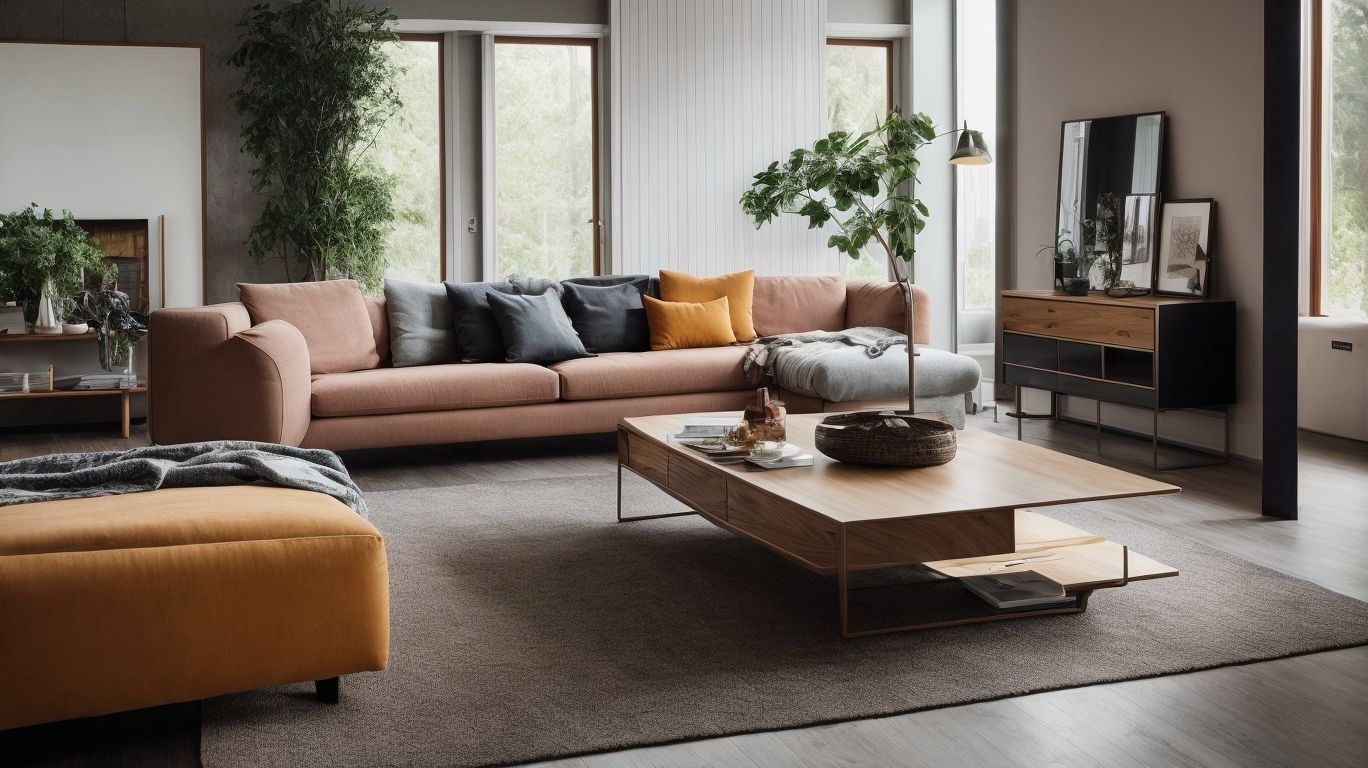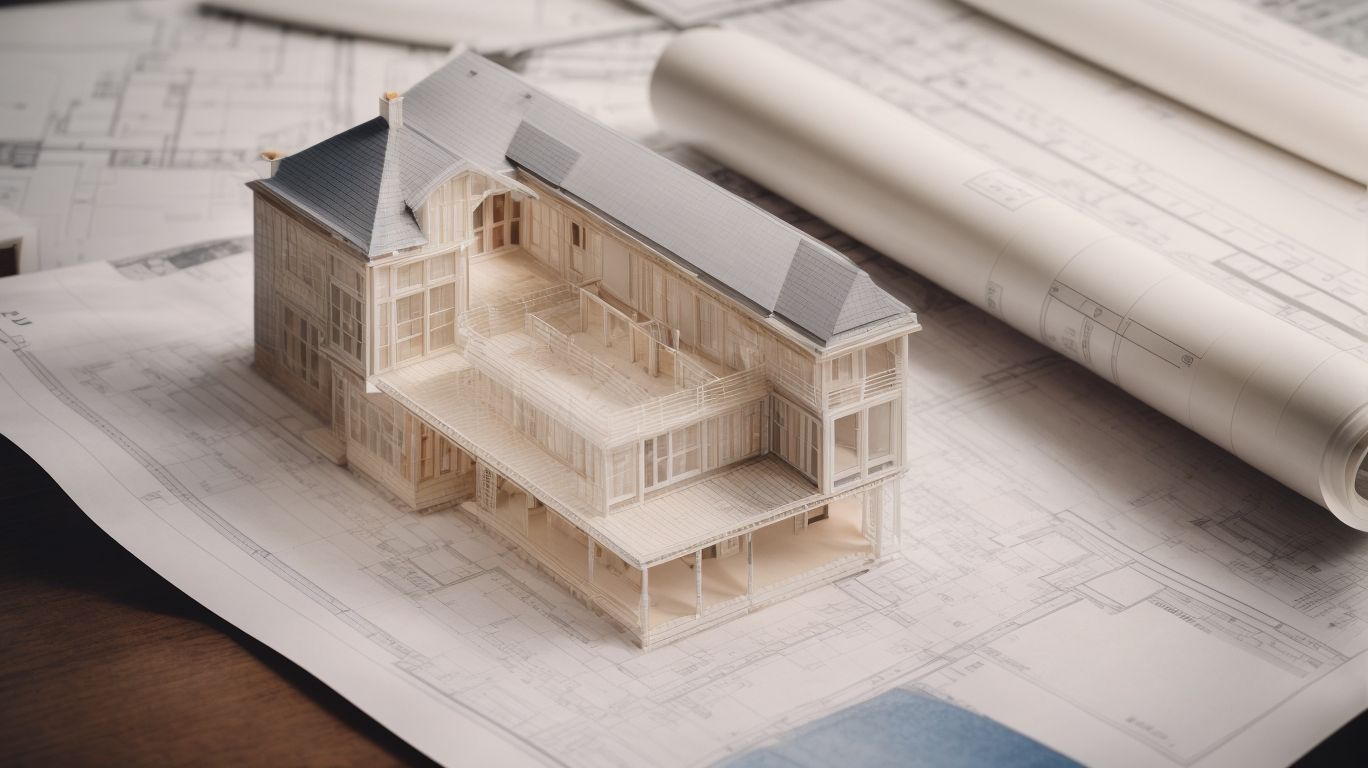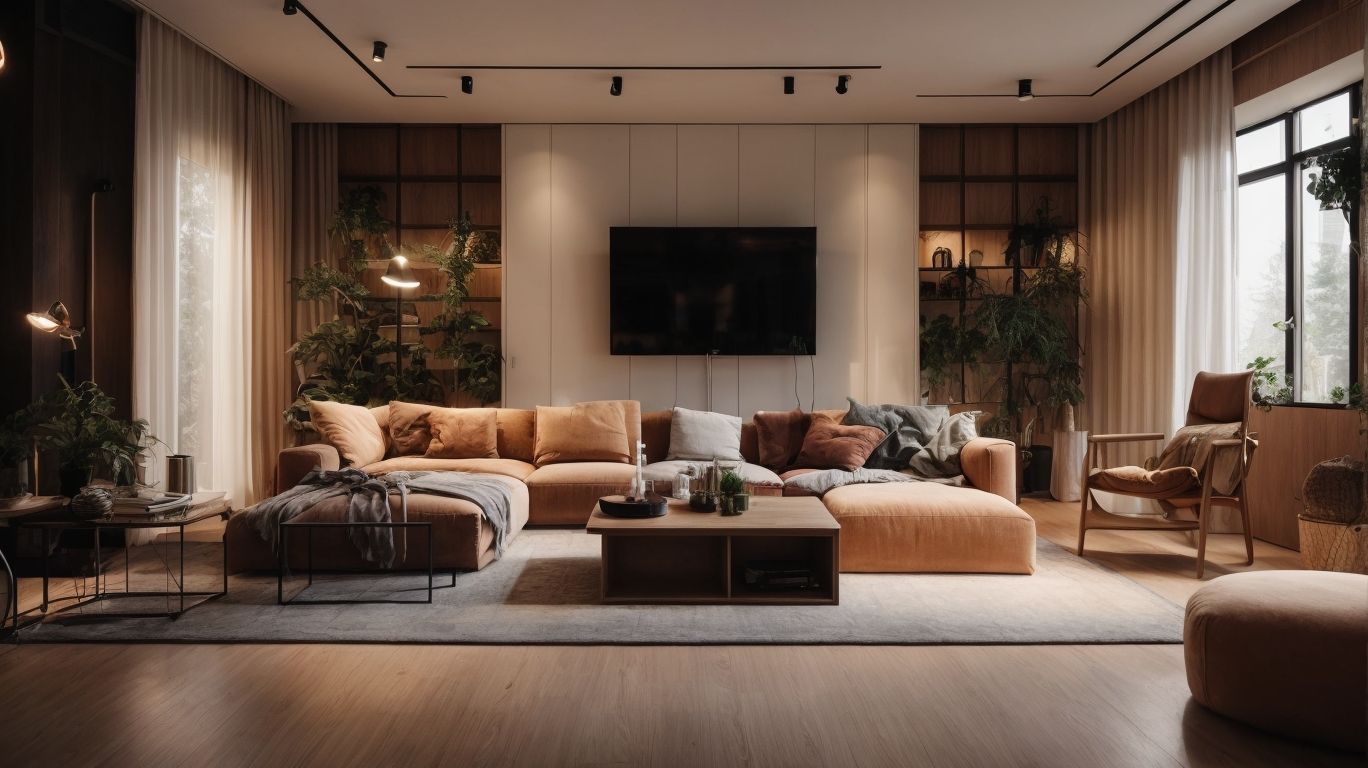
Achieving Aesthetic and Functional Balance in Home Remodeling
In the world of home remodeling, achieving the perfect balance between aesthetics and functionality is the ultimate goal for homeowners and designers alike. Striking this delicate equilibrium can transform a house into a truly harmonious and comfortable living space. But what exactly does aesthetic and functional balance entail, and why is it so important in the realm of home remodeling? In this comprehensive guide, we will explore the key factors to consider, practical tips for achieving this balance, and common mistakes to avoid.
Whether you’re embarking on a major renovation or simply looking to enhance the beauty and usability of your home, this article will provide valuable insights and actionable advice to help you achieve your remodeling goals. So, let’s delve into the world of achieving aesthetic and functional balance in home remodeling and unlock the secrets to creating a space that is both visually stunning and highly functional.
What Is Aesthetic and Functional Balance in Home Remodeling?
Aesthetic and functional balance in home remodeling refers to the seamless integration of design elements, both interior and exterior, that not only enhance the visual appeal and style of a home but also optimize its functionality and practicality.
Achieving this balance involves careful consideration of space and layout, as well as the harmonious blending of aesthetics and functionality to create a cohesive and inviting living environment.
This integration is essential for creating a home that not only looks beautiful but also functions efficiently. By carefully planning the layout and considering how interior and exterior elements complement each other, homeowners can maximize the use of space and ensure that every aspect of their living environment serves a purpose.
From selecting furniture that is both stylish and practical to incorporating outdoor elements that seamlessly flow with indoor spaces, the aesthetic and functional balance ultimately creates a harmonious and enjoyable atmosphere for daily living.
Why Is Aesthetic and Functional Balance Important in Home Remodeling?
Aesthetic and functional balance is crucial in home remodeling as it not only enhances the visual appeal and overall aesthetics of a property but also ensures that the renovated space is optimized for efficiency, sustainability, and harmonious living. Achieving this balance can significantly contribute to the property’s value, making it more attractive to potential buyers and improving the overall quality of life for the occupants.
This harmony between aesthetics and functionality creates a welcoming and comfortable environment, allowing the homeowners to fully enjoy their living spaces. An efficiently designed and visually appealing home can lead to reduced energy consumption, lower utility costs, and a decreased environmental impact, aligning with sustainable living practices.
Ultimately, the successful integration of aesthetic and functional elements enriches the everyday experience of homeowners, creating a sense of pride and contentment in their living environment.
Factors to Consider for Achieving Aesthetic and Functional Balance
Several key factors play a pivotal role in achieving aesthetic and functional balance during the home remodeling process. These factors include space and layout considerations, the incorporation of current design trends, and the careful assessment of client needs and preferences. The seamless integration of interior and exterior design elements is essential to create a cohesive and harmonious living space that embodies both aesthetics and functionality.
Balancing the spatial elements such as furniture arrangement and accessibility is crucial in enhancing the functionality of a space while maintaining its visual appeal. Understanding the client’s lifestyle and habits helps in tailoring the design to their specific requirements, ensuring that the space not only looks beautiful but also serves them effectively.
Staying abreast of current design trends allows for the infusion of fresh and innovative concepts, elevating the overall aesthetic while still meeting practical needs.
Budget
When considering aesthetic and functional balance in home remodeling, it is essential to carefully manage the budget to ensure that the construction and material costs align with the desired design and renovation goals. Effective project management plays a vital role in optimizing the budget while maximizing the quality and visual appeal of the remodeling project.
This approach enables homeowners to make informed decisions about material selection, considering both the visual impact and practical functionality. By keeping a close eye on the budget, the project manager can identify cost-effective solutions without compromising on the overall vision. A well-managed budget also allows for adjustments and contingencies, ensuring that the remodeling process remains on track and within financial parameters.
Ultimately, integrating budget management into the remodeling journey sets the stage for a successful and gratifying transformation of living spaces.
Space and Layout
The consideration of space and layout is fundamental to achieving aesthetic and functional balance in home remodeling. This involves creating a seamless flow between interior and exterior spaces, integrating elements for enhanced functionality, and ensuring cohesive spatial integration that optimizes the overall living experience within the renovated home.
By carefully organizing the layout, one can enhance the natural flow and functionality of different areas within the home. A well-thought-out spatial design can open up opportunities for improved natural lighting, ventilation, and circulation. It also allows for the seamless integration of furniture and decor elements, creating a harmonious blend of aesthetics and practicality. The strategic use of space can enhance the overall living experience, making the home a more comfortable and enjoyable place to live in.
Personal Style and Preference
Incorporating personal style and preference is a key aspect of achieving aesthetic and functional balance in home remodeling. This involves customizing the design and layout to reflect the homeowner’s unique aesthetic tastes while ensuring that the space is optimized for comfort, functionality, and personalized living experiences.
By infusing personal flair into the design, individuals can create a living space that exudes their individuality, making it a true sanctuary. From choosing colors and textures that resonate with the homeowner to customizing furniture and fixtures to suit their specific needs, personalization allows for the creation of a home that supports and enhances the homeowner’s lifestyle.
By merging personal style with functionality, a personalized living space can offer a sense of fulfillment and contentment that goes beyond mere aesthetics.
Current Trends and Design
Staying informed about current design trends and aesthetics is essential for achieving aesthetic and functional balance in home remodeling. This involves incorporating modern materials, color schemes, and interior/exterior design elements that align with contemporary trends, enhancing the overall visual appeal and functionality of the renovated space.
By understanding the latest design trends, homeowners can ensure that their renovated homes remain stylish and functional for years to come. Modern materials such as eco-friendly options are being integrated to promote sustainability, while color schemes are carefully chosen to create cohesive and inviting spaces. Incorporating design elements like minimalist furniture and clean lines helps in achieving a contemporary aesthetic, elevating the overall look and feel of the home while also optimizing practical use of the space.
Tips for Achieving Aesthetic and Functional Balance in Home Remodeling
Achieving aesthetic and functional balance in home remodeling can be facilitated by implementing certain key tips and strategies. These include choosing a focal point, mixing and matching materials, incorporating natural light, and considering the flow of movement within the living space.
By considering the architectural elements and layout of the home, individuals can enhance the aesthetic appeal and functionality of their living spaces. It’s essential to blend creativity and practicality by embracing versatile and timeless design elements. This can be achieved through thoughtful furniture selection, appropriate storage solutions, and the use of neutral colors accented with pops of vibrant hues.
Investing in comfortable seating and quality textiles can significantly elevate the elegance and comfort of the interior, ensuring a well-balanced and visually pleasing ambiance while maintaining practicality.
Choose a Focal Point
Selecting a focal point is a crucial aspect of achieving aesthetic and functional balance in home remodeling. This involves identifying a central element or feature that sets the tone for the overall design, creating a sense of proportion and visual harmony within the living space.
It’s essential to consider how the focal point will interact with the rest of the room, drawing attention and guiding the eye throughout the space. A well-chosen focal point, whether it’s a fireplace, artwork, or an architectural feature, can anchor the design and serve as a conversation starter.
Beyond aesthetics, focal points contribute to the functionality of a space by defining traffic flow and spatial organization. Their strategic placement can also emphasize the unique character of a room, enhancing the overall ambiance and style.
Mix and Match Materials
The strategic combination of various materials is an effective way to achieve aesthetic and functional balance in home remodeling. By blending different materials and textures, homeowners can create a sense of integration, proportion, and unity within the design, enhancing both the visual appeal and functionality of the renovated space.
This approach allows for the seamless incorporation of elements like wood, stone, metal, and glass, contributing to a harmonious coexistence in the living environment. The careful selection of materials also ensures that the space not only looks stunning but also serves its intended purpose.
For instance, integrating durable yet visually pleasing materials in high-traffic areas can ensure longevity and practicality without compromising on the overall design aesthetic.
Incorporate Natural Light
The incorporation of natural light plays a pivotal role in achieving aesthetic and functional balance in home remodeling. This involves optimizing the use of natural light to enhance the visual appeal of the space, improve energy efficiency, and create a sustainable living environment that prioritizes natural illumination.
It also significantly impacts the mood and atmosphere of the interior, creating a harmonious living environment that promotes well-being and productivity. By harnessing natural light, homeowners can reduce their reliance on artificial lighting, thereby lowering energy consumption and contributing to a more sustainable lifestyle.
The strategic placement of windows, skylights, and other light-enhancing features can transform a room, making it feel more spacious, inviting, and connected to the outdoors.
Consider the Flow of Movement
Considering the flow of movement within the living space is essential for achieving aesthetic and functional balance in home remodeling. This involves creating a cohesive layout that facilitates seamless movement between different areas, promoting integration and overall spatial cohesion for an inviting and functional living environment.
It’s not just about the visual appeal; a well-designed flow enhances practicality and usability. When the layout considers the natural paths of movement, it improves the functionality of the space, making everyday activities more convenient.
A balanced flow also contributes to a sense of harmony and well-being, creating an environment that feels comfortable and effortless to navigate. By prioritizing movement, homeowners can create a home that is as functional as it is beautiful.
Common Mistakes to Avoid in Achieving Aesthetic and Functional Balance
While striving for aesthetic and functional balance in home remodeling, it is essential to be mindful of common mistakes that can detract from the overall design and functionality. This includes avoiding the oversight of functionality, recognizing the importance of lighting, being cautious about blindly following trends, and ensuring that the overall aesthetic of the home is consistently considered throughout the remodeling process.
By overlooking the practical aspects of a design, one may inadvertently sacrifice the functionality of a space. Proper lighting is pivotal for enhancing the visual appeal and functionality of each room.
While staying informed about current trends can be inspiring, it’s important not to let them overshadow the individual character of the home. Ultimately, maintaining a cohesive aesthetic throughout the remodeling journey ensures a harmonious and appealing living environment.
Overlooking Functionality
One of the critical mistakes to avoid in achieving aesthetic and functional balance is overlooking the importance of functionality. It is essential to ensure that the design seamlessly integrates practical elements and considerations, optimizing the functionality of the living space without compromising its overall aesthetic appeal.
This differentiation is vital for creating a harmonious and efficient space that caters to both visual appeal and practical needs. Neglecting functionality can lead to a disjointed or impractical design that complicates daily tasks and hinders the overall usability of the space.
For instance, a beautifully designed kitchen may lose its appeal if it lacks efficient storage and workflow. Therefore, assessing the functional requirements alongside the aesthetic vision is crucial to strike the perfect balance in design.
Ignoring the Importance of Lighting
Neglecting the significance of lighting can hinder the achievement of aesthetic and functional balance in home remodeling. It is crucial to prioritize both natural and artificial lighting, ensuring that the living space is well-illuminated, visually appealing, and optimized for various functional purposes.
Balancing natural and artificial lighting creates a harmonious atmosphere, enhancing the visual appeal and functionality of the space. Natural light brings warmth and depth, while strategic placement of artificial lighting can highlight architectural features and create specific ambiances. Properly lit spaces can improve productivity and mood, making it vital to consider lighting as a fundamental component of any interior design or remodeling project.
Following Trends Blindly
Blindly following design trends without considering their integration and impact on the overall aesthetic and functional balance can lead to challenges in home remodeling. It is essential to assess trends critically and ensure that they align with the cohesive design and harmonious living environment being created.
This approach helps in avoiding the common pitfall of incorporating trendy elements that may clash with the existing aesthetic or disrupt the functionality of the space. By carefully evaluating the relevance of each trend and its potential to enhance the overall design, homeowners and designers can strike a balance between staying current and preserving the timeless appeal of the space.
Integrating trends thoughtfully into the overarching design vision allows for a cohesive and enduring outcome, rather than one that quickly becomes outdated.”
Not Considering the Overall Aesthetic of the Home
Failing to consider the overall aesthetic coherence of the home throughout the remodeling process can undermine the achievement of aesthetic and functional balance. It is crucial to ensure that every design decision contributes to the harmonious integration, proportion, and visual appeal of the entire living space.
Every detail, from the choice of colors and textures to the placement of furniture and lighting, should be thoughtfully assessed for its impact on the overall aesthetic experience. Holistic design decisions take into account not only individual elements but also their collective effect on the atmosphere and functionality of the space. This approach allows for a seamless blend of form and function, resulting in a living environment that is both visually captivating and practical for everyday living.




No Comments